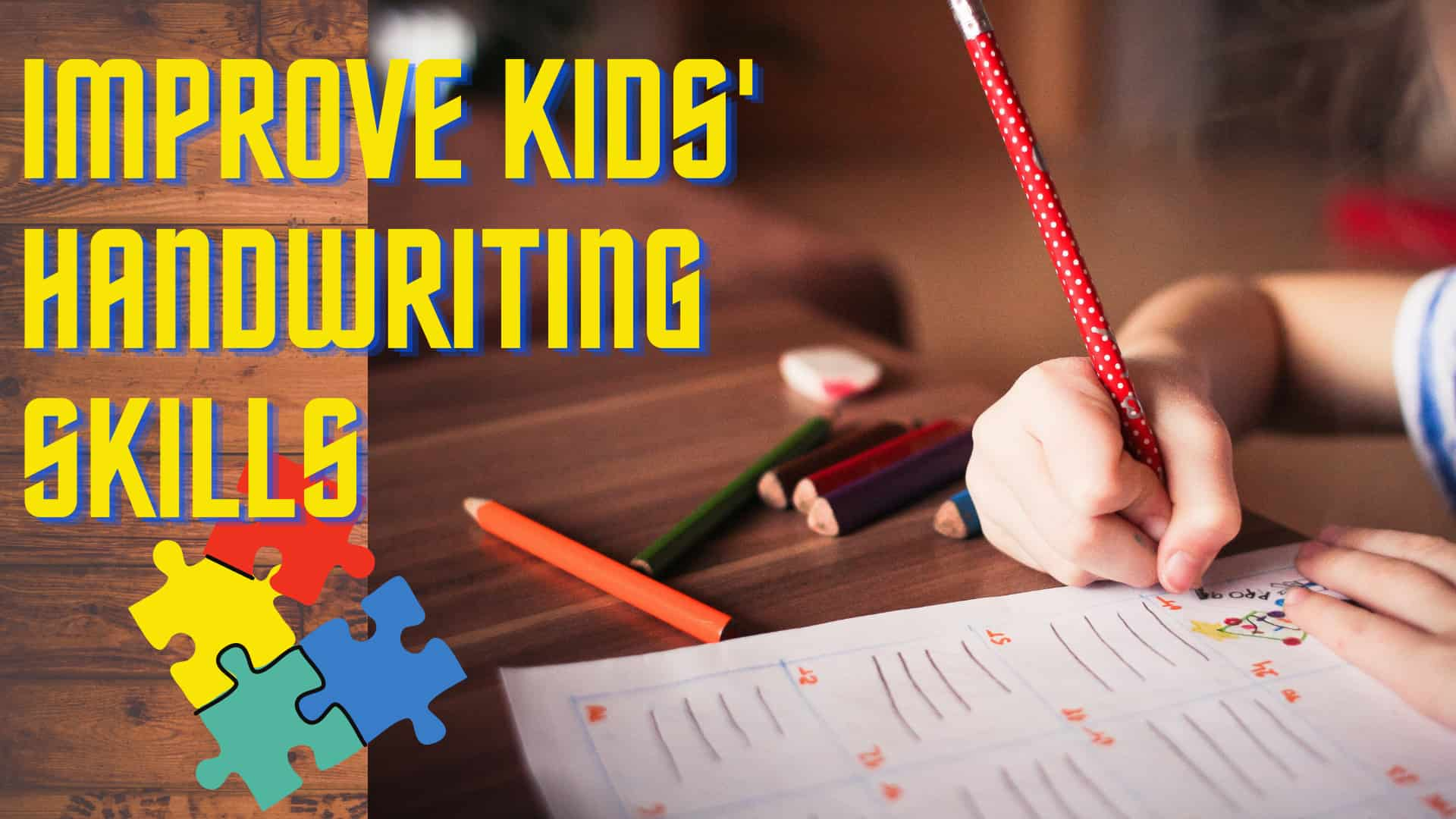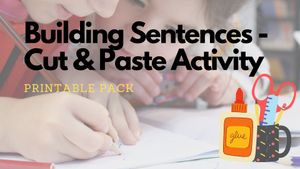Do you remember hearing this or saying this? I believe this is not so uncommon an observation of parents of kids in kindergarten or just starting Grade 1. Kids who are enthusiastic readers, great communicators but pulling their weight when it comes to writing. For this blog, let us assume that there is a genuine impediment that is holding them back and making the effort of writing too overwhelming for our otherwise smart kid.
Without further adieu let me take you to pre-writing skills.No, I am not referring to the tracing and connecting worksheets that we encourage our toddlers to work on. Tracing those zigzag lines and shapes are effective as a stepping stone for writing, but I would like to take you a little deeper and even further away from the pencil - fine motor skills.
Fine motor skills involve the movement of the smaller muscles/ muscle groups in your child’s hands, and fingers. They form the foundation of any child’s ability to maneuver a pencil to form a perfect or near-perfect letter, number, or shape. It is the reason kids can do their buttons, open and close their water bottles, zip and unzip their backpack, put on their shoes, and all the other activities that need them to form a grasp with their tiny fingers. So what can we do to improve the dexterity of those tiny hands?
Sorting Activities
Using those tiny fingers
Let’s start with this one. Small is a relative term, but depending on your child’s age, small could mean anything between small toy figurines/ animals to beads. With my six-year-old, I often plan this activity to get some work done around my kitchen. I give him a bowl of frozen veggies (frozen veggies were a part of our COVID 19 panic buying spree) and get him to sort through it and separate the peas, corns, carrots, and beans. Some get squished in the process but I do end up with bowls of segregated veggies to use as I please. You could carry out the same activity with M&Ms, beads, cereals, and pulses.
Using tongs and tweezers
We should have either of these tools in our house to set up an activity. I usually have a packet of pom-poms lying around. So, depending on the mood, I ask my son to sort them as per size ‘big’, ‘medium’ and ‘small’ or as per colors. I use post-its to label the bowls so that he subconsciously reads and commits the words to his memory. You can use fruit loops, pulses, M&Ms for this activity, the only condition is that your child will have to use the tong/ tweezer and not their hands.
Crafting Activities
Cutting skills/ using scissors
This one is fun. Pick up any old newspaper or flier and get your child to cut out pictures they like for their scrapbook or a craft project. To add an element of classification and grouping of objects, I usually label the page randomly as ‘five fruits’, ‘my breakfast’, or ‘rainbow colors’. The idea is to teach our children how to cut paper. With practice, get creative and draw a line, zigzag, or shape and see if they can cut along them. There are worksheets for this sort of activity, but I find that my son enjoys cutting pictures when it is part of a bigger project.
Most kids I know would be thrilled to cut colorful construction paper to create animal puppets, banners, gift boxes, cards, to name a few. So, our objective here is to supervise and encourage them while they work on these craft projects. Please use the kids-friendly scissors as they are designed to safeguard those delicate fingers. And adult supervision is necessary when young kids use scissors.
Painting
This activity is the reason for my son’s decent fine motor skills. He is passionate about drawing and coloring, be it crayons, markers, watercolors, or hand paints. So, we always bought all sorts of colors for him to play with and explore as a toddler. This is still the number one motivator for him to do any homework/ project. Crayons, chalks, and paint brushes require them to form the pincer grip.
Threading beads
While growing up, making a flower garland was a part of my daily routine for my grandma’s shrine at home. Depending on the seasonal blooms, the garlands were always fragrant and colorful. Little did I know then, that the time spent threading together the flowers would eventually help develop my dexterity and enable me to hold my pencil with a “dynamic tripod” grasp or popularly referred to as the “pincer grip”, where the thumb, index, and middle fingers are holding the pencil. The easiest way to replicate this activity would be to thread beads together for making a bracelet or anklet. Do select the size of the beads and needle depending on your child’s age. If your child is working with beads, kindly ensure there is adult supervision to avoid any choking hazard.
Family Games/ Activities
Puzzles and legos
Doing a puzzle is a great family activity. Kids love all sorts of puzzles. Putting the pieces together and helping them interlock to form the entire picture requires dexterity and hand-eye coordination. It also encourages patience, concentration, and a sense of accomplishment in the child’s mind. Legos, because of their tiny sizes and numerous possibilities, are very good tools for developing fine-motor skills, as well as problem-solving and mathematical/ logical thinking.
Storytime
We can leverage storytime to improve not only reading skills but also writing skills. We simply have to encourage our children to turn the pages one at a time. This requires manipulation of their hands and fingers and it grows with age and practice. Board books are easier and a good way to start, and then we can move onto books with many pages. During storytime kids eagerly turn the pages to see what happens next and our mission is easily accomplished.
Daily/ Routine Activities
Opening and closing bottles
Yes, it is that simple. As a parent, I unknowingly always happened to loosen and open the bottle caps for my son. Be it the cap of a chocolate milk bottle or the cap of a toothpaste tube. I used to even apply the required amount of toothpaste and handed the toothbrush to him. Now I don’t. Opening bottle caps, lunch boxes, turning doorknobs, and even unzipping and zipping his backpack, lunchbox and jacket are excellent for developing the pincer grip. So, let us encourage our kids to open their bottles, get that door for us, and put on their jackets themselves. These daily routine actions will help develop much more than just writing skills.
Using utensils
With kindergarten, came the realization that my son needs to be able to use utensils independently. We have been working on that ever since. Both my sons, the school-goer, and the toddler find the use of forks relatively easier when compared to other utensils. So you can start with that too.
Brushing teeth
As I discussed in my last blog, brushing teeth and opening/ closing faucets improves fine motor skills. The hand-eye coordination required while brushing teeth is quite significant. Standing in front of a mirror helps them to complete the routine more effectively. These activities are part of our daily routine and though you are not doing anything new, you are now aware of the connection between brushing and your kids’ writing skills. While you are at it, make your child fill a cup or pour water in a cup to rinse his/ her mouth after brushing. Pouring also requires simultaneous use of the eye and the hand and processing of the information. All the more reason for dental hygiene.
Dressing up
My six-year-old can do all the buttons in his nightshirt but needs some time to get them right. For many years, I kept telling myself that this is not a goal for him as most outfits here have zips, are pull-overs, or pull-ups. But at four years old when he started doing all his buttons on his own, we were thrilled. For practice, get him/ her to do their buttons. It requires a significant amount of hand-eye coordination, which again is very important for writing skills.
If you get the essence of the above points, you will realize that any activity that requires hand-eye coordination and dexterity helps develop fine motor skills. Fun activities like cooking, baking, stirring, putting on the jacket, doing the zip, putting on shoes, and socks, can help your child with his/ her writing skills. Keep trying out these activities with your child with stuff available at home. With time, we should be able to notice a shift in the attitude of your child, when writing will no longer be such a bad thing after all!








